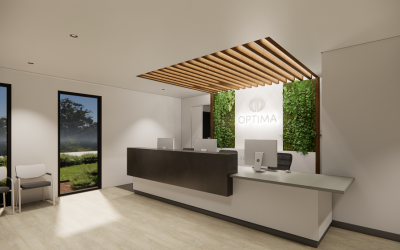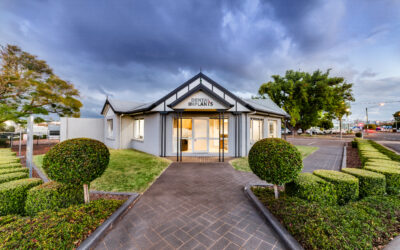Phobias related to trips to the dentist are hardly a new phenomenon. Many of your potential patients are fraught with memories of past experiences; stark white walls, endless fluorescent lighting, and vinyl seating that clings to sweaty palms, it is easy to understand why uncomfortable sensory associations can be made. What is new, however, is the bigger conversation piece. What can be done to alter these outdated thoughts and radically change the public perception of dentistry?
A Natural Response
Design and architecture will often dismiss the importance of human experience, by placing focus only on the iconic, and all but forgetting the fact that people react to their environment – by searching for their place within it. At OPTIMA, we believe that designing dental spaces that create a sense of place, comfort and belonging are akin to crafting the soul of a practice.
Humans display natural sensitivities to beauty and expression, both of which cause a direct effect on emotional satisfaction by providing a space of sensitivity, comfort, and beauty your practice will be the soothing balm for a patient’s heightened anxiety. Create a completely sensory experience with diffusers, comfortable and movable furnishings, and beautiful feature pieces such as artworks, and pendant lighting to draw a patient’s focus into a completely new dental experience. This attention to detail communicates – you are cared for and your experience here is important.
“The designer could be cast in the role of a communicator whose messages to the user concern the symbolic qualities of products. Just as a journalist creates informative messages from a vocabulary of terms, so could a designer be thought of as having a collection of forms at his disposal with which he creates arrangements that can be understood as a whole in their essential parts and that are usable by a receiver because of this communicated understanding” (Mothersill, 2014).
Colour correction
The true impact of colour far exceeds the aesthetic, affecting us physiologically as well as emotionally. Colour, when used skillfully and carefully can positively influence a full range of emotions, including anxiety. “Research reveals people make a subconscious judgment about a person, environment, or product within 90 seconds of initial viewing and that between 62% and 90% of that assessment is based on color alone.” (CCICOLOR: Institute for Color Research)
Colour research has determined that bright and evocative colours create a stimulating effect on blood pressure, respiration, and heart rate. Conversely, softer colours cause an inward response of calm and repose. Blue and green shades, in particular, create feelings of relaxation and wellbeing.
Biophillia: A design trend to reduce stress
Biophilia is the principle that we have an innate desire to connect with nature, the biophilic design seeks to satisfy these needs in our modern, built environment.
Supporting the concept of biophilia, attention restoration theory or ART, proposes that time spent in the outdoors or even viewing nature scenes is not only enjoyable but can improve focus, the ability to concentrate and importantly, lower stress levels. Thus providing an important interaction – the restoration of our energy, our attention and ourselves. Creating an environment that is restorative, calming and in tune with your patient’s psychobiological needs is tantamount to a dental practice that is viewed as holistic and nurturing.
There are many ways to incorporate biophilia into your space, the use of natural materials such as wood or concrete, potted or hanging plants, or showcasing greenery in unique ways such as a feature wall, which is an ideal concept for spaces with little natural lighting.
Human-centered practices are the solution to changing the public perception of dentistry. Re-tuning a patient’s unconscious response requires providing an experience that communicates that they are understood, cared for and nurtured. Together, we can change the public perception of dentistry.



